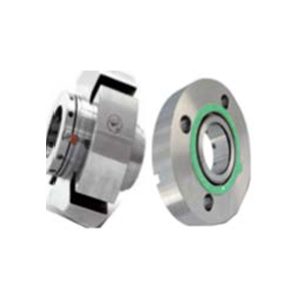The Evolution of Mechanical Seals in Engineering

Sealing the Deal: The Journey of Mechanical Seals in Engineering
Mechanical seals are like the unsung heroes of the engineering world. You might not see them, but they’re crucial for keeping machines running smoothly. Over the years, these seals have evolved greatly, becoming more efficient and reliable. Let’s take a closer look at how mechanical seals have transformed and why they matter so much.
What Are Mechanical Seals?
Mechanical seals are devices that prevent the leakage of fluids between stationary and rotating parts. Think of them as the gatekeepers in machines, keeping liquids and gases where they belong. They’re used in pumps, compressors, and many other types of equipment. By creating a barrier, these seals help maintain pressure and prevent contamination. Without them, machines would face massive failures.
The Early Days: Simplicity at Its Best
In the beginning, mechanical seals were pretty basic. Early engineers used simple designs made from leather, rubber, or metal. These materials got the job done but weren’t very durable. You can picture it like a kid’s first bicycle — it works, but it’s not built for speed or long journeys. Back then, leaks were common, leading to downtime and costly repairs.
Innovations in Design: Enter the Modern Mechanical Seal
As technology advanced, so did the design of mechanical seals. Engineers began experimenting with various materials like ceramics and advanced polymers. These materials offered better resistance to heat and wear. It’s like upgrading that kid’s bike to a high-performance model — faster, more efficient, and built to last.
Today’s mechanical seals can handle extreme temperatures and pressures. They’re designed for longevity, reducing the need for frequent replacements. This evolution has significantly decreased maintenance costs and improved operational efficiency in various industries.
Types of Mechanical Seals: A Diverse Range
Mechanical seals come in many shapes and sizes, each designed for specific applications. Some common types include:
- Single Mechanical Seals: These are the most straightforward type, used in many standard applications. They’re reliable and cost-effective.
- Double Mechanical Seals: Used in more demanding environments, these seals provide an extra layer of protection. They’re like having a backup plan; if one seal fails, the other takes over.
- Cartridge Seals: These are pre-assembled units that simplify installation. They’re like a ready-to-go meal kit — everything you need in one package.
Each type serves a unique purpose, ensuring that there’s a seal for every situation.
The Role of Technology: Smart Sealing Solutions
With the rise of smart technology, mechanical seals have also embraced innovation. Today, many seals are equipped with sensors that monitor performance in real-time. Imagine having a personal trainer who keeps track of your progress and provides feedback. These sensors alert operators to potential issues before they escalate, reducing downtime and improving safety.
The Future of Mechanical Seals: Green and Clean
As industries focus more on sustainability, mechanical seals are also evolving. New materials and designs aim to reduce environmental impact. Innovations like bio-based seal materials are becoming more common. This shift not only benefits the planet but also enhances efficiency. It���s like switching from a gas-guzzler to a fuel-efficient car — better for the environment and your wallet.
Conclusion: A Seal of Reliability
The evolution of mechanical seals reflects the broader changes in engineering. From simple beginnings to advanced designs, these components have become essential for modern machinery. By understanding their journey, we can appreciate the role they play in various industries. Just as a solid foundation is necessary for a strong building, reliable mechanical seals are crucial for efficient operations. They keep the wheels of industry turning, ensuring that everything runs smoothly and efficiently.
